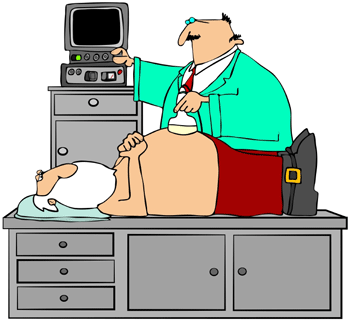Special feature: Santa Claus is just as real as the rest of us . . . unhealthy lifestyle choices and all!
Although I do not personally treat Santa Claus, I feel compelled to share my observations on his health and my concerns about his lifestyle choices.

While watching a Christmas movie with my kids recently, I noticed a striking deterioration in Santa Claus’s physical condition, and thought I would share my observations and diagnoses.
Santa suffers from obstructive sleep apnea but can’t use a C-pap machine because the mask won’t seal properly over his beard. He is not willing to shave, fearing he may lose his job.
He has type 2 diabetes or at least IGT, his HDL is 0.81, his LDL is 4.8, his TGL are 3.4. He was referred to a cardiologist because he was short of breath when climbing the chimney, and even though his MIBI test showed no ischemia (he could not reach the required METS with treadmill testing) the cardiologist wants him on Lipitor and ASA (81 mg per day).
The South African locum put him on Coversyl, and his Canadian family doctor changed him over to Ramipril. The jolly old soul was also advised to do 50 minutes of fast walking per day, most days per week, which he hasn’t done yet (and frankly has no intention of ever starting).
Santa’s recent colonoscopy (ordered because of abdominal bloating and bleeding caused by hemorrhoids) showed only diverticulosis, and he was advised to drink lots of fluids and eat a high-fibre diet.
An abdominal ultrasound, ordered after a young locum felt stool in Santa’s colon through his diastasis of the rectus abdominus and thought he may have an AAA, showed only NASH.
The dietitian told him to cut down on fats, to eat meat only a few times per week and reduce servings to the size of a deck of cards, to use Splenda instead of sugar, and to consume complex carbohydrates instead of refined carbohydrates. However, Mrs Claus told her husband about a book she read advising eating a lot of fats and meat and no fruit or carbs, and that her niece lost 20 lbs by following this diet. Confused by all this contrary information, Santa has decided to ignore all the advice and just keep going the way he always has.
Losing weight and making lifestyle changes would help ensure that Santa has a speedy recovery and can return to normal activities as soon as possible after his upcoming knee replacement surgery, scheduled for September 2013.
When confronted about his lifestyle, Santa insists that he doesn’t eat a lot, and says that his mother is still alive and well at 91 though she baked every day of her life. Santa feels “if it’s not broke, don’t fix it” and states that he has an obligation to continue eating all the milk and cookies the children leave him, otherwise “How would they feel?”
Upon review of this summary of the patient’s medical history and lifestyle issues, I am forced to conclude . . . that I probably need a bit of a break from primary health care.
hidden
Dr Frouws is a GP in Kaslo.
